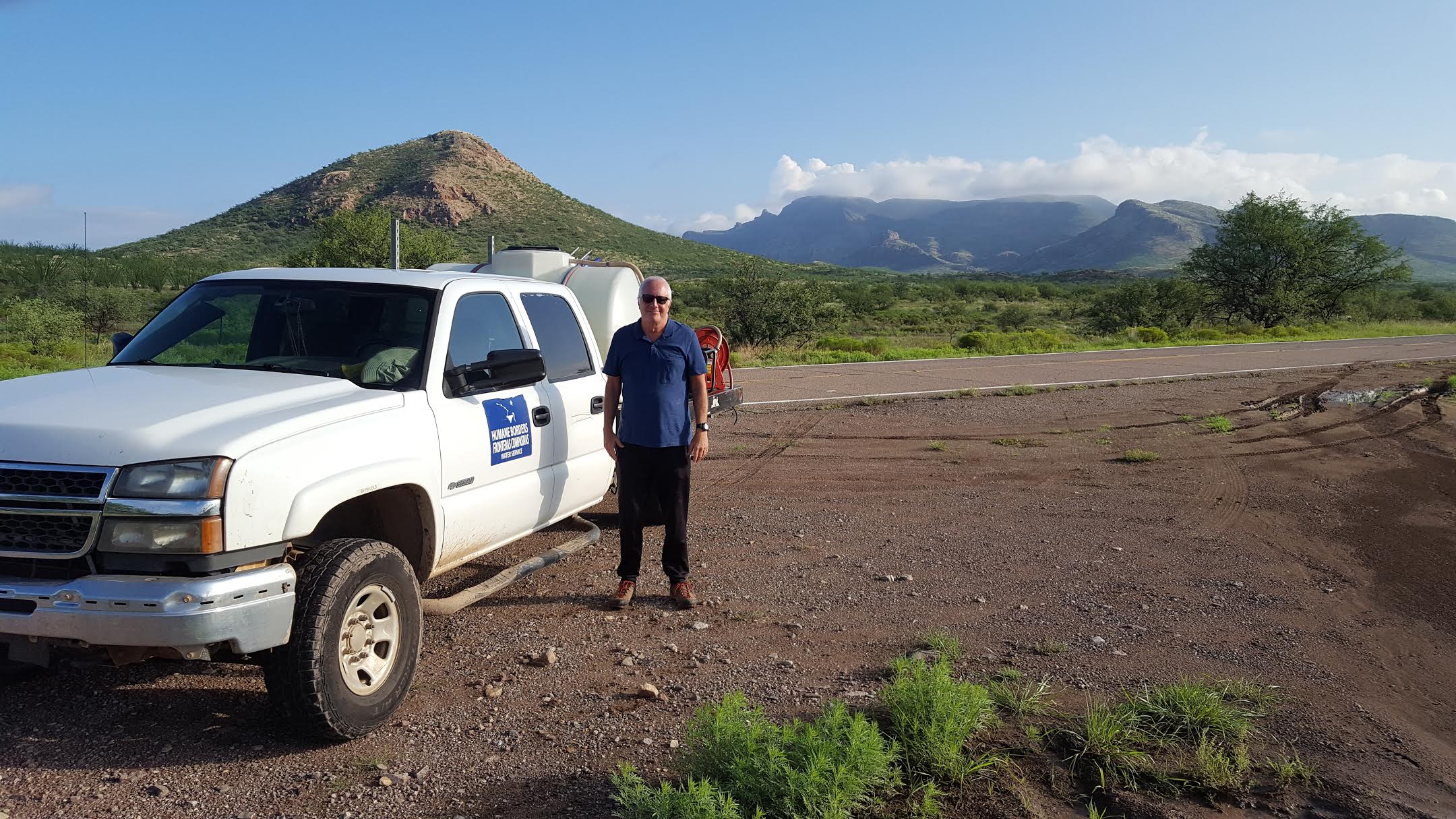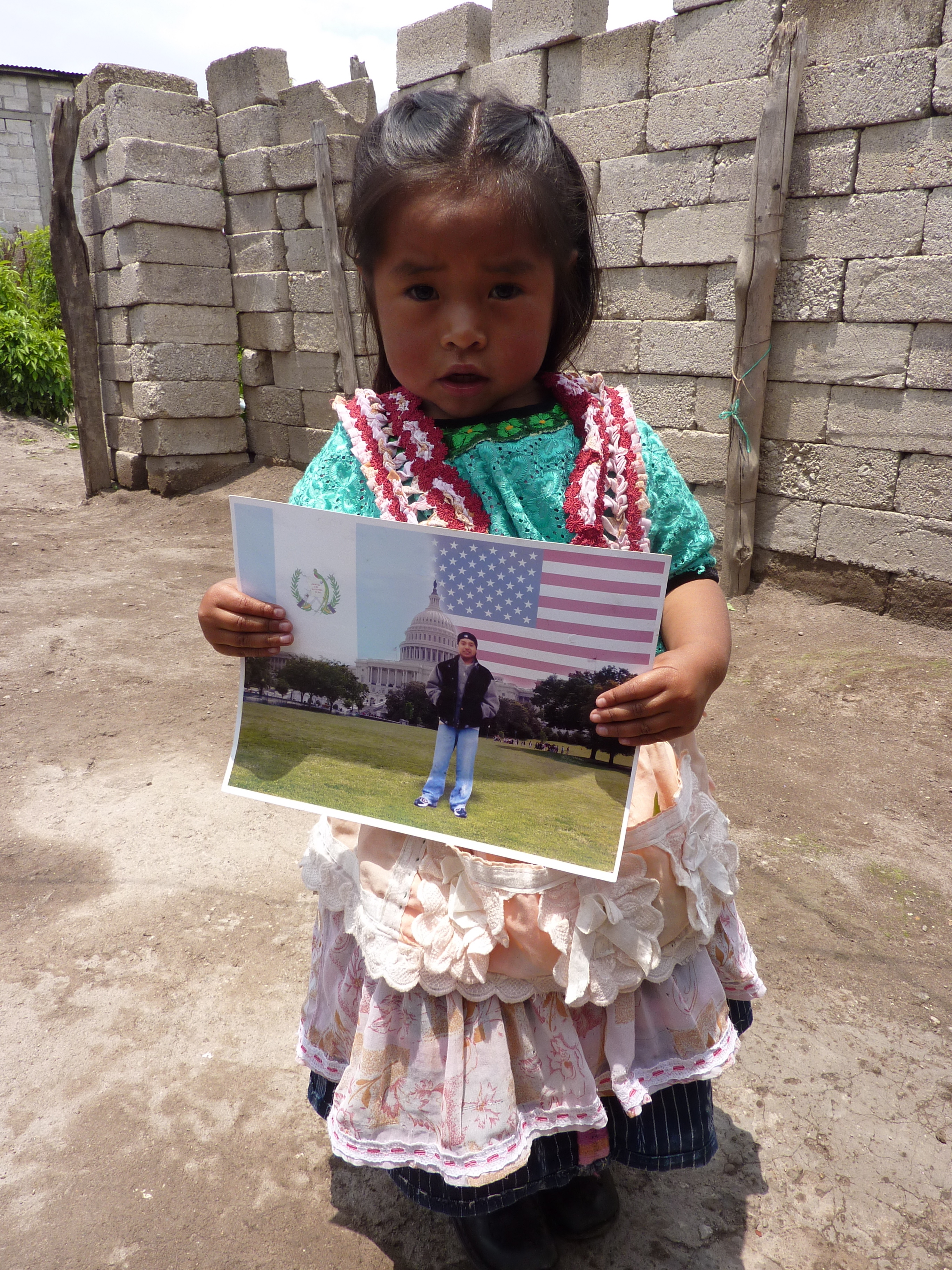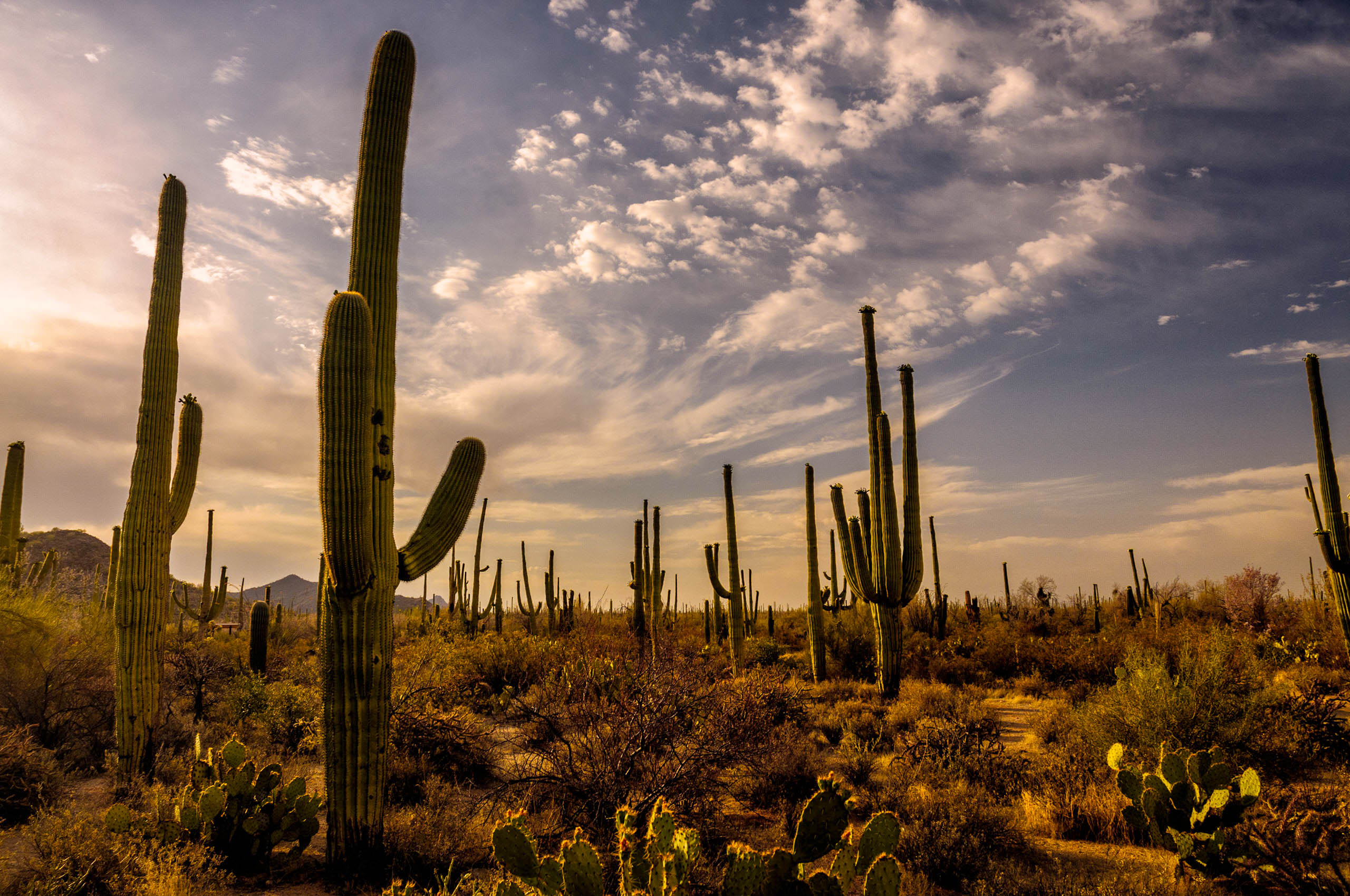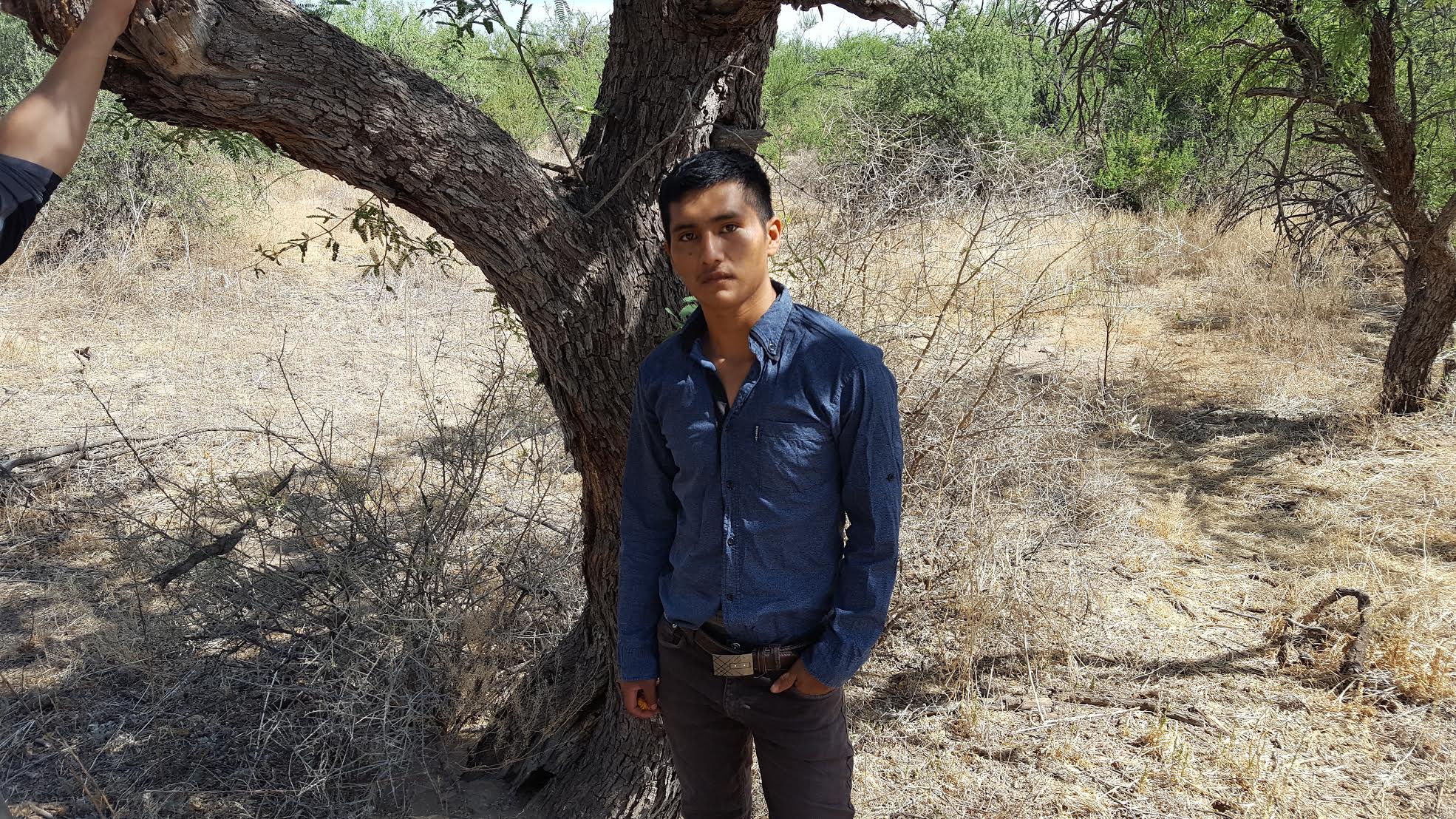On a stiflingly hot summer afternoon, Stephen Saltonstall sits behind the wheel of a white Chevrolet Silverado, watching the heatwaves rise from the remote Arizona road before him. Adjusting his sunglasses beneath his ball cap, he decides to play a little game with himself: Count the number of United States Customs and Border Protection trucks that pass by him on his way toward the border from Tucson. After reaching 50 trucks he loses track.
Commutes like this have become routine for Saltonstall since he became a volunteer driver for Humane Borders, a humanitarian non-profit that maintains a system of water stations throughout the Sonoran Desert for migrants making the trek across the southern border. Though he’s only seen a few migrants in his three years along the border, he knows they’re around him, either hiding from his truck (which is easily mistaken for the white Border Patrol pick-ups) or staked out in the Sonoran’s scant shade to escape the triple-digit summer heat. Those he has come across have been in dire need of food and water, if not near death. Even then, they’re hesitant to linger after eating the fresh fruit, peanut butter, trail mix, and cheese Saltonstall stores in a cooler in his truck. They typically move on within a few minutes of eating, too afraid to chance a run-in with CBP agents.
As he makes his way further down the two-lane highway, Saltonstall looks out at the wilderness on either side of him. Mesquite trees and cacti sprawl across the scrubland that has claimed the lives of thousands of migrants over the past two decades alone. Pulling over to check on the first water station along his route (and “station” is generous: It contains a 55-gallon plastic blue drum with a spigot for migrants to access clean water), he’s shocked to find the barrel nearly empty. “There must have been 50 gallons consumed from that barrel, which I’d estimate took about two dozen people. That’s quite a bit considering we fill them up every week,” he says. That unusual rate of usage leads Saltonstall to a quick conclusion: “I think we’re seeing more people cross the desert unlawfully.”

(Photo: Courtesy of Steven Saltonstall)
At first glance, this notion runs counter to the national narratives surrounding immigration since Donald Trump took office in 2017. The widely recognized “Trump Effect,” fueled by the president’s fire-breathing rhetoric and demands for a complete lockdown of the U.S.-Mexico divide, was thought to have slowed the wave of migrants seeking to cross the border and put the “coyotes” who smuggle them out of work. And in many ways, that phenomenon was real. In 2017, a little more than 300,000 people were apprehended by CBP agents while crossing, a 50 percent drop from the year prior. And yet, according to the International Organization for Migration, more migrants died along our border last year than in 2016.
This isn’t a coincidence. Trump has cut legal immigration rates to historic lows (including for asylum seekers and refugees), increased militarization along the border through efforts to boost CBP presence and capabilities, and made repeated claims that migrants arriving from Latin America are dangerous and to be feared. He’s also blocked crucial paths to freedom for people fleeing danger and destruction in their homelands. History says hyper-enforcement like this widens the pool of potential border crossers destined for deadly places like the Sonoran Desert and adds to the border’s body count.

To grasp the callousness of America’s border policy, you have to understand the unforgiving harshness of the borderlands—especially the Sonoran Desert. The site of the highest concentration of deaths at the U.S. border, the Sonoran stretches more than 100,000 square miles across Northern Mexico, Baja California, southeastern California, and most of the southern half of Arizona. This area’s as vast as it is treacherous: Though portions of the desert do receive rain during the monsoon season, that water quickly evaporates under the sun’s blistering heat. Water sources are almost non-existent and shade from the region’s shrubby mesquite trees is sparse, providing little reprieve from scorching summer temperatures that often reach upwards of 118 degrees. Every year, migrants wander through the Sonoran’s arid landscape hoping to emerge on the other side, safe and in America. Conservative estimates say at least 3,000 have died in the process over the past two decades.
For decades, American politicians have pushed people into the Sonoran through a strategy of “prevention through deterrence,” which operates under the premise that migrants will stop trying to come to the U.S. if their path becomes too risky. Bill Clinton introduced this idea during his first years in office, when he authorized the construction of U.S.-Mexico border barriers in three major operations: Operation Gatekeeper in California (1994), Operation Safeguard in Arizona (1994), and Operation Hold-the-Line in Texas (1993). A few years later, he ramped up efforts to combat illegal immigration by signing the Illegal Immigration Reform and Immigration Responsibility Act of 1996, further militarizing the border in hopes of pushing back would-be border crossers. Ten years later, George W. Bush signed the Secure Fence Act of 2006 into law, setting aside over a billion dollars to construct an additional 700 miles of double chain link and barbed wire fences equipped with guard stations, infrared cameras, and light poles. Barack Obama also allocated $600 million for 1,500 CBP agents in 2010 through the Southwest Border Security Bill and later argued in 2014 that the U.S. needed an “aggressive deterrence strategy” to repel crossing migrants. Over the course of this decades-long border build-up—which has strategically created a barrier system that is strongest near cities and weakest in remote areas like those along the Sonoran—CBP apprehensions and migrant death totals have soared. Despite the American government’s best efforts, migrants have continued to come.

(Photo: Colibri Center for Human Rights)
As calls to “build that wall” at Trump’s 2016 rallies grew to a fever pitch, many worried he would rely on the deadly strategy of deterrence even more heavily than his predecessors. Though Trump hasn’t yet received funding for his highly sought-after border wall, some experts are alarmed about how openly his administration has embraced the concept. “The difference with Trump is that this idea of deterrence is more brazen, violent, and alarming than ever before,” says Robin Reineke, an anthropologist who co-founded the Colibrí Center for Human Rights, which is working to end migrant death along the U.S. border. For over a decade Reineke has been partnering with migrant families and forensic scientists to find and identify the remains of people who have died crossing the border. Reineke’s caseload has always increased when there’s an immigration crackdown by the federal government, and the Trump administration’s strict policies are no different. “Since it took the mantle, this administration has pushed to all but eliminate legal immigration into the U.S. That directly influences how people can get into this country—and the rate at which migrants die and disappear along our border,” she says.
Reineke isn’t alone in her pessimism. Brad Jones, a professor who specializes in immigration policy at the University of California–Davis, says Trump’s increased border militarization hasn’t stopped people from coming; it’s just forced them to take more dangerous routes to avoid apprehension. “All of these things don’t secure our border, they just lead to higher migrant death rates and an endless cycle of tragedy,” says Jones (who’s also a volunteer with Humane Borders). “At this point, the correlation between migrants crossing and migrants dying is close to zero. That tells you that migrants are taking greater risks to avoid detection and detention—and that impact is being magnified by the Trump administration’s hardline stance on immigration.”
Observations by borderland search-and-rescue groups like the San Diego-based Los Angeles Del Desierto support Jones’ findings. Rafael Larraenza, the group’s co-founder, says the number of people crossing in dangerous, difficult-to-reach places has dramatically increased over the past couple years. “The calls never stop. I’m far busier this year than in the past several years,” he says. “Since Trump took power, people are trying to cross in remote places that are extremely dangerous and harder for us to reach, including private property like ranches in South Texas and reservations in Arizona.”
This problem could be getting worse too. Unlike last year, when the “Trump effect” was in full swing, 2018 has brought a surge of migration to the U.S. from Central American countries like Guatemala, El Salvador, and Honduras. The majority of migrants are either fleeing rampant gang violence (including from MS-13, which Trump has repeatedly said is ravaging the U.S.), domestic abuse, extreme poverty, or a combination of all three. In past years, these circumstances would have given these people a relatively good chance at claiming asylum. But that’s not the case anymore, according to comments by Attorney General Jeff Sessions in early June.
Paired with the administration’s now-infamous “zero tolerance” policy that has further raised the stakes of border crossing apprehensions for migrants and led to the separation of thousands of families detained by CBP, this restrictive stance on asylum has created a heightened level of concern for humanitarian workers like Reineke. “We’re worried that people with legitimate asylum claims, who are being deterred from ports of entry and being denied their human right to be heard on those claims, will fall victim to the same funnel effect we’ve seen force migrants through the desert for years,” she says. “As people continue to face lengthy, week-long waits to report to U.S. Customs agents, I fear they’re going to have to make a really difficult decision—and I predict a significant number of them will decide to walk through the desert. Keep in mind that it’s July, it’s extremely hot, and it’s only getting hotter.”

(Photo: Ade Russell/Flickr)
This isn’t conjecture on Reineke’s part. According to a recent Reuters article, the number of migrants dying from extreme heat along the U.S.-Mexico border rose by 55 percent over the past nine months. Much of that has been fueled by an influx of families and children braving the desert. As of June 30th, year-to-date CBP apprehensions of unaccompanied children have risen by 83 percent since last year in Arizona’s two desert-laden sectors of Yuma and Tucson. During that same period, apprehensions of family units have also gone up by 112 percent in those areas. And while the paths of these migrants (and whether they chose to cross the border after first seeking asylum) are uncertain, accounts of asylum seekers being turned away from ports of entry by U.S. Customs officials have been well-documented over the past month.
Jones saw this first-hand while volunteering in a Tucson migrant shelter in late June. As he sat with two young Nicaraguan parents and their three-year-old boy, he learned they’d avoided trying to enter the country through a port of entry out of fear they’d be detained and separated. Instead, they tried to make it through the Sonoran Desert before eventually being apprehended. “Here’s this young couple—probably in their early twenties—and their toddler, a family on the run without a home in search of a safe haven, and they chose the most dangerous possible route to get here,” he tells me. “The day they were apprehended, it was 110 degrees. That’s pure desperation.”

A year and a half ago, Stephen Saltonstall was completing his weekly water run for Humane Borders when he found a young man sprawled on the ground near one of their stations. Although the man wasn’t dead, he was suffering from dehydration and prolonged sun exposure. After giving him water and food, Saltonstall learned he was a 19-year-old from Chiapas, Mexico, (which borders Guatemala) named Norberto who was trying to get to Gadsden, Alabama, to reach his brother. He’d been with a group of people but, after being chased all night by Border Patrol agents in helicopters, on ATVs, and on horseback, he was the only one who’d managed to escape through the desert’s prickly cacti and thick underbrush. Norberto had no idea where he was—or how far he was from his brother. “He asked us to help him surrender, which I don’t think was an easy thing for him to do,” Saltonstall says. “He was just too exhausted to go on.”

(Photo: Stephen Saltonstall)
Norberto was fortunate to have been found. Many others in his situation, unable to find water stations or workers provided by humanitarian organizations, perish without a trace. For many aid workers, that’s the massive elephant in the room when discussing migrant death counts along the border: the CBP-dictated system of identifying and accounting for migrant remains is murky at best and broken at worst. As uncovered by both the Arizona Republic and CNN, Border Patrol agents have been undercounting the number of dead migrants they’ve discovered for years. Those are just the remains that are found, Brad Jones points out. “Estimates say it takes a body about three weeks to decompose in the desert. That’s not very long when you consider a border region that’s as empty and hostile as many portions of ours is. You can’t help but wonder how many people have been left behind and are never recovered.”
While that ambiguity complicates any investigation of what’s truly taking place along the border, it also underscores the need for accountability and the importance of forensic organizations like Reineke’s Colibrí Center. Their workload reflects it too—they currently have over 700 pending missing person cases in Arizona and Texas, in addition to a full backlog of active cases. With only four employees on staff, they’re completely overwhelmed by the growing list of bodies.
Things look even scarier for migrants moving forward. As people continue to pour in from Central America and the president refuses to back down from his “zero tolerance” deterrence, the number of those who will attempt to cross areas like the Sonoran Desert stands to increase—an especially chilling thought for Jones considering we’re only now entering the Southwest’s hottest (and deadliest) months. “The conditions migrants are fleeing from in Guatemala, El Salvador, and Honduras are beyond imagination. They’re traveling thousands of miles and, increasingly so, are bringing their children,” Jones says. “These people fleeing to what [President Ronald] Reagan once referred to as ‘the shining city upon a hill,’ the place of hope—but hopes are being dashed.”
This environment has also upped the emotional toll for humanitarian workers like Saltonstall, who knows every outing he takes in the Sonoran Desert could lead to an encounter with death. “A few months ago, one of our volunteers found a human skull with flesh still on it. I guess it’s just something you have to deal with in doing the work that we do; it’s obviously nothing compared to what the people that die go through,” he says. “Still, you can’t help but wonder what that person was trying to overcome—and acknowledge how sad it is that their bones have been scattered through the desert like trash.”





